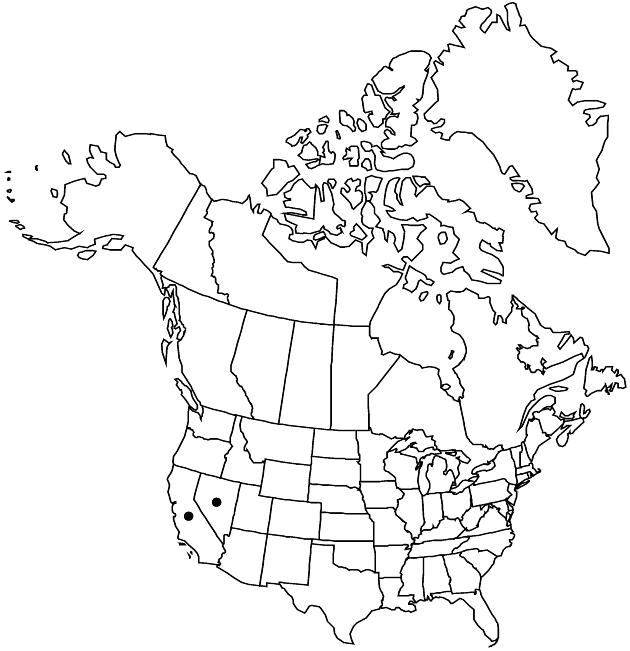Ericameria nauseosa var. mohavensis
Phytologia 75: 87. 1993.
Common names: Mojave rabbitbrush
Endemic
Basionym: Bigelowia mohavensis Greene in A. Gray et al., Syn. Fl. N. Amer. 1(2): 138. 1884 (as Bigelovia)
Synonyms: Chrysothamnus nauseosus var. mohavensis (Greene) H. M. Hall
Revision as of 20:58, 5 November 2020 by imported>Volume Importer
Plants 60–80 cm. Stems white to yellowish green, nearly leafless at flowering, densely tomentose. Leaves yellowish green; blades 1-nerved, filiform, 10–30 × 0.5–1.5 mm, faces glabrate. Involucres 8.5–12. Phyllaries 20–26, apices erect, acute, abaxial faces tomentose to glabrate. Corollas 7–10.9 mm, tubes puberulent, lobes 0.9–2 mm, glabrous; style appendages longer than stigmatic portions. Cypselae densely hairy; pappi 6.3–9.8 mm. 2n = 18.
Phenology: Flowering late summer–fall.
Habitat: Dry scrub Artemisia, pinyon, Atriplex, Joshua tree communities
Elevation: 400–2400 m
Discussion
Variety mohavensis may intergrade with vars. hololeuca and oreophila. It grows in southern Nevada and southern California.
Selected References
None.
Lower Taxa
None.
